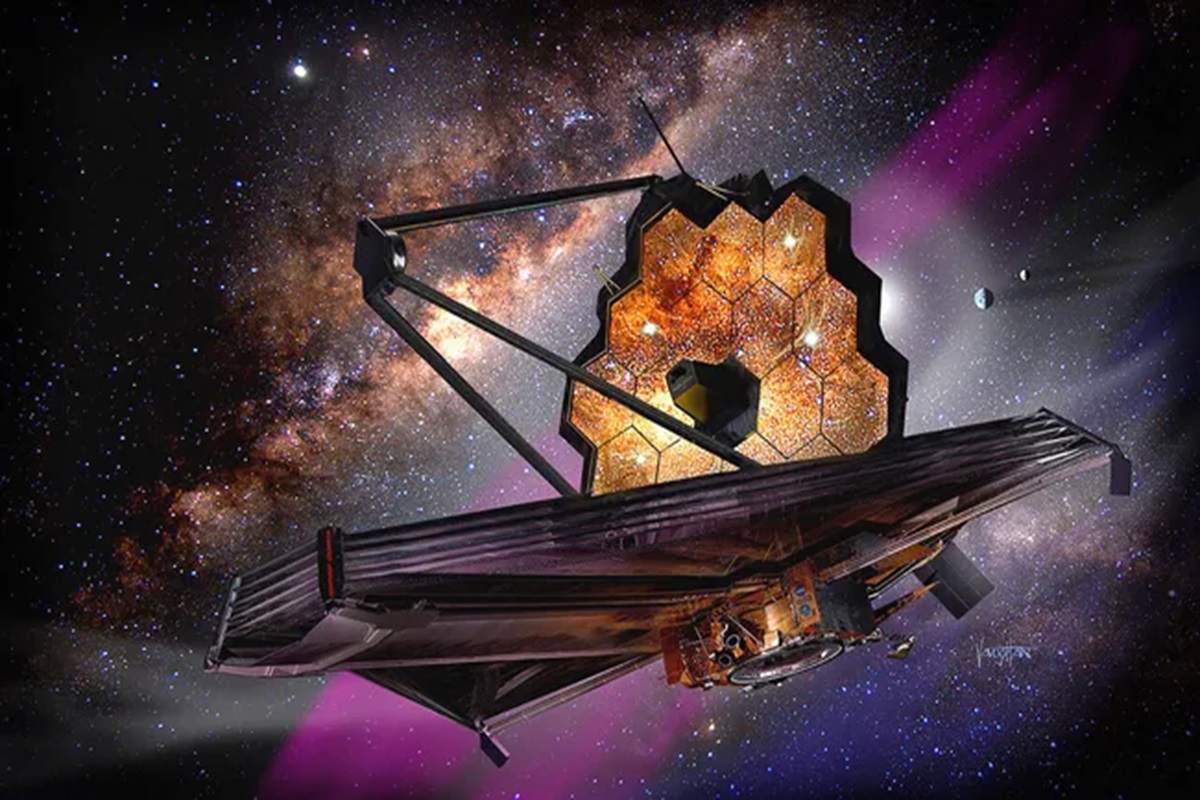After spending two years in space, the James Webb Space Telescope (JWST) has made a groundbreaking discovery that challenges our understanding of the cosmos. For decades, measurements of the universe’s expansion have hinted at a discrepancy known as the Hubble tension. This anomaly, which threatens to reshape our understanding of cosmology, has been further solidified by the JWST’s precise observations.

Almost a century ago, astronomer Edwin Hubble unveiled the universe’s balloon-like expansion and the accelerating movement of galaxies away from each other. However, recent measurements have revealed a growing disparity in the rate of the universe’s expansion, known as the Hubble constant, depending on where astronomers look.
On the second anniversary of its launch, the JWST has intensified the mystery with incredibly accurate observations, prompting a reevaluation of the standard model of cosmology. This has ignited a fierce debate among scientists about the need for new physics to either modify or entirely replace the existing 40-year-old theory.
The existing cosmological model relies on the presence of dark matter and dark energy, constituting about 25% and 70% of the universe, respectively. However, the nature of these components remains a mystery, and their exact roles are yet to be understood. The emergence of the Hubble tension has added another layer of complexity, as different methods used by astrophysicists suggest varying rates of the universe’s expansion.
The JWST, with its superior capabilities compared to the Hubble Space Telescope, has now provided observations that align with the Hubble tension. This result, measuring the Hubble constant at approximately 73 km/s/Mpc, has left cosmologists grappling with potential modifications to the standard model.
Some scientists, like Adam Riess, are exploring adjustments to the Lambda cold dark matter (Lambda-CDM) model, suggesting that dark energy may not be constant but evolves over the cosmos’ lifespan according to unknown physics. However, other researchers argue that the tension calls for more radical solutions, including the abandonment of Lambda-CDM and the introduction of alternative theories like Modified Newtonian Dynamics (MOND).
The situation is described as a “crisis” in the cosmological community, prompting urgent efforts to find a resolution. The JWST’s advanced capabilities, such as making ultradetailed measurements of celestial objects, offer hope for shedding light on this cosmic mystery. The telescope’s findings may either provide a solution or unveil further complexities, paving the way for a new era in our understanding of the universe.
Leave a Reply